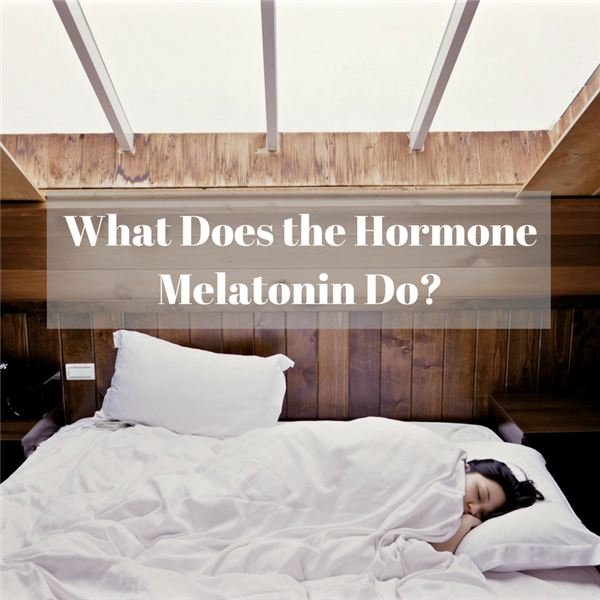What Does the Hormone Melatonin Do?
The Architecture of Sleep
Sleep architecture refers to the process of sleep in stages. Your brain goes through various levels of brainwave activity and eye movement during sleep. There are four main stages: N1, N2, N3 are all non-rapid-eye-movement sleep stages, also called synchronized sleep. The fourth stage is called REM.
In N1, the stage of falling asleep, you may experience hypnic jerks or a feeling of falling.
N2 is the light sleep is where you spend about half of your night.
N3 is for a deeper sleep and according to electroencephalogram readings, shows very slow brain waves.
REM is named for “rapid eye movement,” when your most vivid dreams occur. REM sleep is required to feel fully rested. This stage also may contain atonia, called sleep paralysis. Although a bit frightening, sleep paralysis can occur as a person is moving into or out of REM sleep, the deepest part of sleep, and is a type of temporary muscular paralysis that occurs following sleep.
The brain oxygen levels drop and muscle inhibition happens. REM is high brain activity characterized by someone’s eyes making rapid movement.
A sleeper will pass through these various stages in about five of these cycles.
Hours @Sleep
Adequate sleep is not just about the number of hours spent in sleep or the amount of time you are in bed. It also reflects the depth and quality of that slumber. The eight-hour sleep mark is not a benchmark for all people; everyone has a highly individualized sleep quotient that is influenced by age, genetics and health.
Sleep is very much connected to a circadian rhythm. What this means is your body is synchronized to nature’s cycle of light and darkness. This internal biological clock, if you will, is controlled by a small bundle of nerves found near the center of your brain—it tells you when to wake up, sleep, eat and be active.
Insomnia
Insomnia is not only a word to describe trouble falling asleep, but it can also include not staying asleep, waking too early or feeling unrested after a night’s slumber.
There are many different things that can affect or contribute to insomnia: physical body discomfort or chronic pain; digestive difficulties: restless leg syndrome; sleep apnea; or the need for frequent bathroom visits are just some of the causes.
A person’s emotional well-being is affected, as demonstrated by chronically sleep-deprived individuals and how they function, and lack of sleep can be responsible for anxiety disorders and depression. In addition, people who do not get adequate sleep are slower to respond and have lowered antibody response (immune system deficit), making them prone to infection and disease.
Sleep Preparation
- Individuals can take steps for better sleep:
- Do not exercise just before bed
- Take a warm bath to raise the body’s temperature. It is then cooled by room air. A body temperature drop is a useful signal to sleep and a room temperature around 68-degrees (20˚C) is best
- Control lighting with darkening curtains or shutters
- Avoid electronic devices before bed—at least one hour before (computer glasses are available online that help to block the light that saps melatonin)
- Keep sounds to a minimum or try earplugs or a white noise device
- Store your alarm clock out of immediate view so you won’t calculate time and become anxious about not falling asleep, as the stress hormones cortisol and adrenaline need to be at their lowest for adequate sleep.
Relaxation Techniques
- Use a journal to help diffuse tension and over-planning
- Concentrate on your breathing or tune out your surroundings by placing a hand on your heart
- Try to regulate your bedtime for consistency
- Use the bedroom for sleep only
- Begin unwinding an hour before bedtime, adjust the lights lower, have a cup of green or chamomile tea or cherry juice
The Hypothalamus
The hypothalamus is a pearl-sized gland within your brain that produces the hormones that regulate the heart, temperature, mood, sex drive, hunger and thirst. It also controls the release of hormones from other endorphin glands such as the pituitary and the adrenal glands. The pituitary is a pea-sized gland—called the “master gland”—at the base of the brain that releases hormones and affects functions of other endocrine glands as well.
Melatonin is one of these hormones and could be called the Wi-Fi of the human body. It’s made by the pineal gland, binds to receptors in the hypothalamus and helps to control 24-hour day-night wake and sleep cycles. Melatonin levels begin to rise in the mid-to-late evening hours, run high through the night and drop early morning.
Unfortunately, melatonin levels drop-off with age. There are older adults in deficit. In most cases, an occasional low-dose supplement before bed can help. The side effects with melatonin augment sleep: the hormone encourages sleepiness, lowers body temperature, creates vivid dreams and makes small changes in blood pressure. Tell your doctor you are taking it or discuss the option if you have trouble sleeping so he can recommend a dose amount for you.
References
- Brown, Richard P., M.D. & Patricia L. Gerbarg, M.D. Non-Drug Treatments for ADHD. New York: W. W. Norton & Co., 2012. Book.
- Weil, Andrew M.D. & Rubin Naiman, PH.D. Healthy Sleep. Boulder: Sounds True studio, DVD.
- Rosenberg, Robert S. The Doctor’s Guide to Sleep Solutions For Stress & Anxiety. Beverly, MA: 2016. Book.
